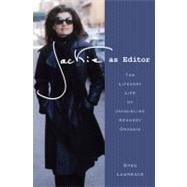
| Introduction: Jackie's Secret Garden | p. 1 |
| A Special Destiny | p. 7 |
| In the Russian Style, by Way of Paris | p. 35 |
| A Tale of Two Houses | p. 58 |
| An Office with a Window | p. 99 |
| Unseen Vistas and Avant-Gardensp121 | |
| Moonwalk and the Power of Myth | p. 145 |
| Bon Courage | p. 180 |
| When Life Comes First | p. 208 |
| All Will Be Well | p. 232 |
| Books Published by Jacqueline Kennedy Onassis | p. 271 |
| Sources | p. 275 |
| Bibliography and Archives | p. 293 |
| Acknowledgments | p. 299 |
| Index | p. 303 |
| Table of Contents provided by Ingram. All Rights Reserved. |
The New copy of this book will include any supplemental materials advertised. Please check the title of the book to determine if it should include any access cards, study guides, lab manuals, CDs, etc.
The Used, Rental and eBook copies of this book are not guaranteed to include any supplemental materials. Typically, only the book itself is included. This is true even if the title states it includes any access cards, study guides, lab manuals, CDs, etc.